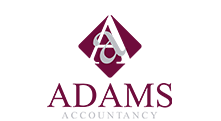UK VAT schemes – which one is right for your business?

When you start out in business, you probably aren’t thinking too hard about which UK VAT scheme you’ll use. You’re focused on getting your first clients, developing your product or service and enjoying being a business owner. However, if your business does well, soon VAT becomes something you can’t ignore. Here, we’ll discuss the different UK VAT schemes to help you decide which one is the right one for you.
Flat Rate Scheme
The Flat Rate Scheme is a simplified VAT accounting scheme that allows small businesses to pay a fixed percentage of their turnover as VAT. It is available to small businesses with a turnover under £150,000. This can be beneficial for businesses that have a high turnover and/or a low level of VAT reclaims. The flat rate percentage varies depending on the type of business, but it is typically around 10-14%.
With the Flat Rate Scheme, you’ll charge your customers 20% VAT (correct for 2023/24) and pay a fixed rate of VAT to HMRC depending on your business type. You keep the difference between what you charge and what you pay HMRC. However, you cannot reclaim the VAT on your purchases, other than certain capital assets over £2,000.
Pros:
- Simple to administer.
- Could save businesses money on VAT.
Cons:
- May not be as beneficial for businesses with a lot of zero-rated or exempt sales.
- If you buy mostly standard-rated items, you could end up worse off.
- If you regularly receive a VAT repayment under standard VAT accounting, the Flat rate scheme may not be beneficial.
Annual Accounting Scheme
The Annual Accounting UK VAT Scheme allows businesses to submit one VAT return per year instead of four. This can be helpful for businesses that have a seasonal trading pattern or that find it difficult to keep track of their VAT records. It is open to businesses with a VAT taxable turnover of under £1.35m.
You’ll need to make advance payments of VAT based on your VAT the previous year (estimated if you are new to VAT) and then submit a final VAT return once a year when you’ll also either make a final payment of VAT or apply for a VAT refund.
Pros:
- Reduces the amount of paperwork and accounting effort.
- Can help with forecasting as you’ll pay a set amount throughout the year.
Cons:
- You may have to pay more VAT than you would if you used the quarterly accounting scheme (until the year end when they can get a refund).
- You may not be able to reclaim all the VAT you incur on expenses.
Cash Accounting Scheme
The Cash Accounting Scheme allows businesses that have a VAT taxable turnover under £1.35m per year to pay VAT when they receive payment from their customers, rather than when they invoice them. This can be beneficial for businesses that have a long sales cycle or that find it difficult to collect payments from their customers.
Pros:
- Simple to administer.
- Can help with cashflow if you have made Vatable purchases but you haven’t yet been paid by your customers.
Cons:
- You can’t claim VAT on purchases until you have actually paid for them (rather than when you were invoiced).
- May not be beneficial if you make lots of zero-rated supplies.
- Once your VAT taxable turnover exceeds £1.6m you must leave the scheme. You must account for the VAT on all your unpaid sales invoices unless they have been unpaid for six months or more.
Retail Schemes
Retail schemes are designed for businesses that sell goods to consumers. There are three main types of retail schemes:
Point of Sale Scheme
This scheme requires businesses to identify and record the VAT at the time of sale. Point of Sale scheme is the most complex of the retail schemes, but it can be beneficial for businesses that have a high turnover of goods.
Apportionment Scheme
This scheme allows businesses that buy certain goods for resale to apportion their VAT liability between goods that are sold at the standard rate and goods that are sold at the reduced rate. The Apportionment scheme is a simpler option than the Point of Sale Scheme, but it may not be as beneficial for businesses that have a high turnover of goods.
Direct Calculation Scheme
This scheme allows businesses with less than £1m of VAT taxable turnover to calculate their VAT liability directly, based on the cost of the goods they sell. The Direct Calculation scheme is the simplest of the retail schemes, but it may not be as beneficial for businesses that have a high turnover of goods.
Understanding and choosing a UK VAT Scheme
The best VAT scheme for a UK small business owner will depend on the specific circumstances of the business. Businesses should carefully consider their options before choosing a scheme. It can be difficult to know which scheme would be most beneficial financially and from an admin perspective, so give the team at Adams Accountancy a call on 01322 250001 for no-obligation chat about your situation.
You may also be interested in:

